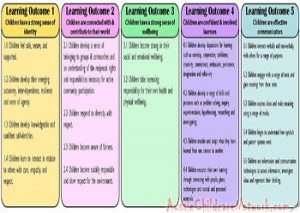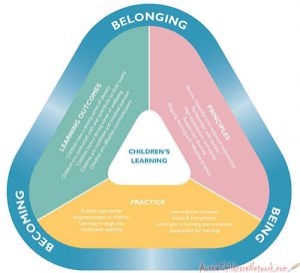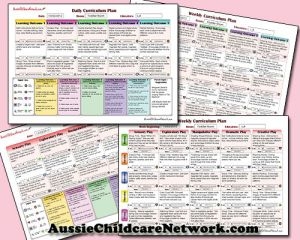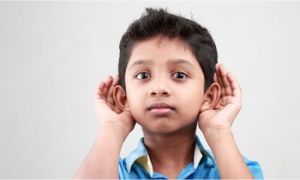In our push to capture every moment under the EYLF, many educators find themselves swamped by paperwork rather than immersed in play. Observation records, plans, reflections, assessments—they grow faster than we can connect with each child. When every anecdote demands multiple frameworks and sign-offs, learning narratives can lose their heart. In today’s landscape, dominated by the Early Years Learning Framework (EYLF), that balance has unraveled. The EYLF was meant to unify and elevate practice. Instead, we’ve watched it morph into an overwhelming checklist culture—where paperwork eclipses presence, and compliance overshadows connection. Somewhere along the way, a valuable framework was repurposed into a bureaucratic beast. So, educators, are we documenting learning or drowning in it?
The Documentation Dilemma—What’s Driving the Overload?
While documentation is meant to support meaningful planning and reflection, it’s often misunderstood or misapplied. Here’s what’s contributing to the overwhelm:
Misinterpreting the Planning Cycle
-
The EYLF 2.0 planning cycle includes observe, assess, plan, implement, and evaluate—but many services treat it as a rigid checklist rather than a flexible, responsive process.
-
Educators feel pressure to document every stage for every child, even though the cycle is meant to be organic, not exhaustive.
Compliance vs. Connection
- Regulations require documentation that reflects each child’s learning, but there’s no mandate to document everything.
- Many educators over-document out of fear—worried that if it’s not written, it didn’t happen.
Quality vs. Quantity
- Rich documentation should be focused on strengths, identity, and culture, not just activity logs.
- The best documentation is purpose-driven, not performative. It should inform planning, not just prove it happened.
What’s Actually Required?
According to ACECQA and the National Regulations:
- Documentation must show that educators plan for and evaluate children’s learning.
- The amount required depends on attendance patterns—not every child needs weekly cycles.
- Services must display the program and make documentation available to families on request.
Strategies To Reclaim Connection
- Curate “micro-moment” snapshots: single-sentence observations tied to a learning intention, captured on the go.
- Use one-page reflective templates that prompt “What did I notice?” and “How will I respond?” instead of long narratives.
- Embed reflection into daily routines: quick team huddles or digital voice notes to share insights in real time.
- Involve children and families: co-author portfolios with their voices, artwork, and stories.
Rethinking Practice: From Burden to Purpose
Here are some sector-backed strategies to reduce stress and reclaim meaning:
| Strategy | Impact |
|---|---|
| One-page cycles or spotlight formats | Reduce time and highlight key learning moments |
| Use EYLF outcome icons or numbers | Speed up linking and reduce cognitive load |
| Include child quotes and family input | Enrich stories and build connection |
| Keep documentation visible | Supports intentional follow-up and team reflection |
| Focus on strengths and identity | Aligns with EYLF principles and avoids deficit framing |
Designing Purposeful Documentation
|
Feature |
Compliance-Driven |
Connection-Focused |
|---|---|---|
|
Length |
Extensive, multi-section reports |
Concise, 1–2 sentence vignettes |
|
Timing |
After the fact, delayed paperwork |
In the moment or immediately after |
|
Audience |
Regulatory bodies, management |
Educators, children, families |
|
Focus |
Alignment to all EYLF outcomes |
Depth of child interests and relationships |
|
Follow-Up |
Formal reviews, audits |
Responsive planning, spontaneous invitations |
We must reframe documentation from a compliance chore to a living narrative that fuels deep relationships. By simplifying tools, embedding reflection, and co-creating with children, paperwork becomes a bridge—not a barrier—to connection.
Further Reading
Q: When Analysing Observations How Do You Know Which Learning Outcome To Use?
Q: How Do I Come Up With Extension Ideas During Observations
Q: Do We Need To Reflect On All Learning Stories, Work Samples and Observations?
Q: How Do I Write Reflections That Inspire and Meaningful Rather Than Reflections That Are Just Meeting Requirements
Q: How Do I Observe a Child's Interest?
Observations in Childcare
Q: How Do I Write An Observation?







 Here is the list of the EYLF Learning Outcomes that you can use as a guide or reference for your documentation and planning. The EYLF
Here is the list of the EYLF Learning Outcomes that you can use as a guide or reference for your documentation and planning. The EYLF The EYLF is a guide which consists of Principles, Practices and 5 main Learning Outcomes along with each of their sub outcomes, based on identity,
The EYLF is a guide which consists of Principles, Practices and 5 main Learning Outcomes along with each of their sub outcomes, based on identity, This is a guide on How to Write a Learning Story. It provides information on What Is A Learning Story, Writing A Learning Story, Sample
This is a guide on How to Write a Learning Story. It provides information on What Is A Learning Story, Writing A Learning Story, Sample One of the most important types of documentation methods that educators needs to be familiar with are “observations”. Observations are crucial for all early childhood
One of the most important types of documentation methods that educators needs to be familiar with are “observations”. Observations are crucial for all early childhood To support children achieve learning outcomes from the EYLF Framework, the following list gives educators examples of how to promote children's learning in each individual
To support children achieve learning outcomes from the EYLF Framework, the following list gives educators examples of how to promote children's learning in each individual Reflective practice is learning from everyday situations and issues and concerns that arise which form part of our daily routine while working in an early
Reflective practice is learning from everyday situations and issues and concerns that arise which form part of our daily routine while working in an early Within Australia, Programming and Planning is reflected and supported by the Early Years Learning Framework. Educators within early childhood settings, use the EYLF to guide
Within Australia, Programming and Planning is reflected and supported by the Early Years Learning Framework. Educators within early childhood settings, use the EYLF to guide When observing children, it's important that we use a range of different observation methods from running records, learning stories to photographs and work samples. Using
When observing children, it's important that we use a range of different observation methods from running records, learning stories to photographs and work samples. Using This is a guide for educators on what to observe under each sub learning outcome from the EYLF Framework, when a child is engaged in
This is a guide for educators on what to observe under each sub learning outcome from the EYLF Framework, when a child is engaged in The Early Years Learning Framework describes the curriculum as “all the interactions, experiences, activities, routines and events, planned and unplanned, that occur in an environment
The Early Years Learning Framework describes the curriculum as “all the interactions, experiences, activities, routines and events, planned and unplanned, that occur in an environment


